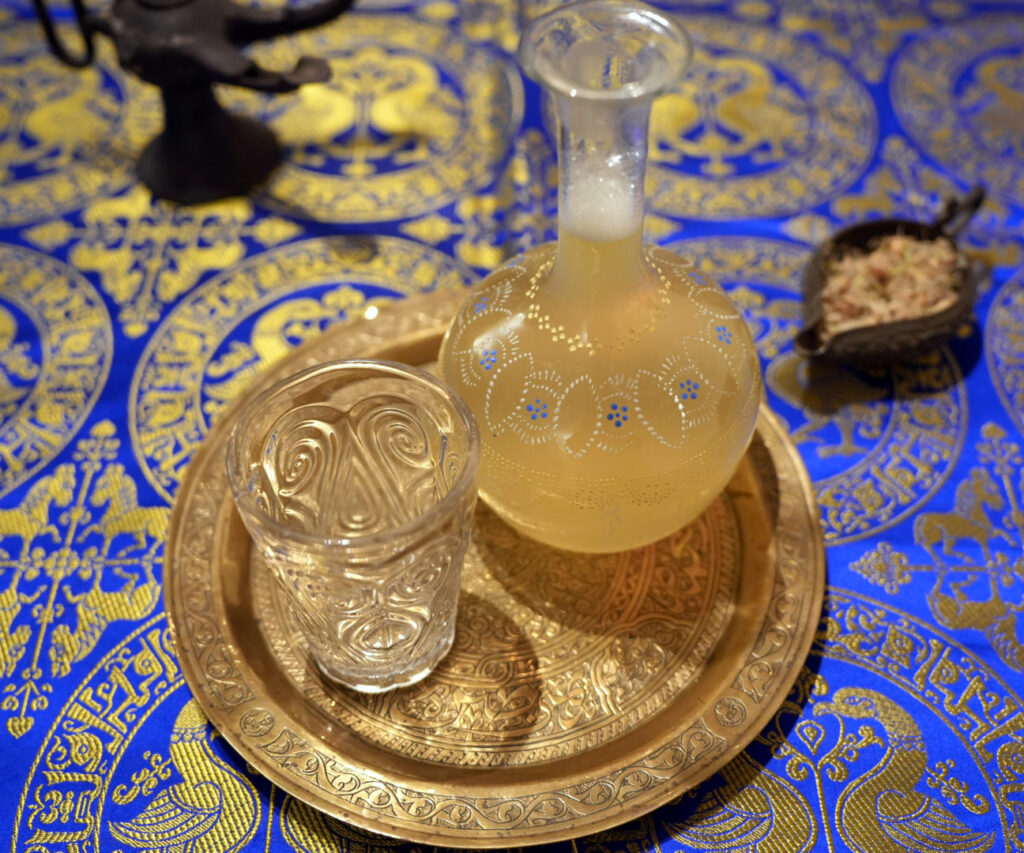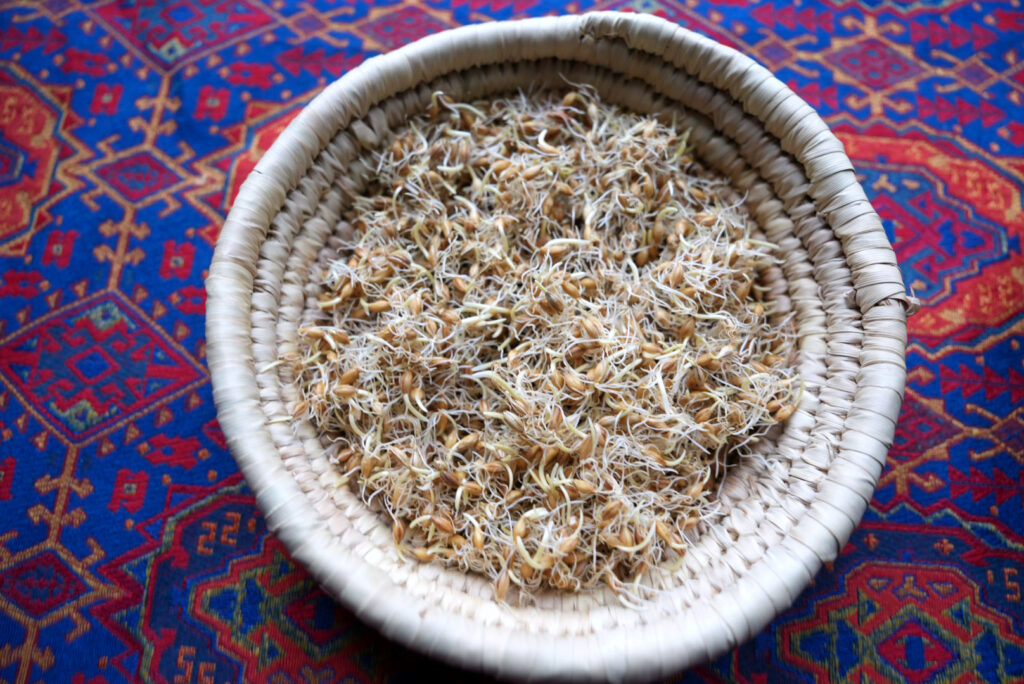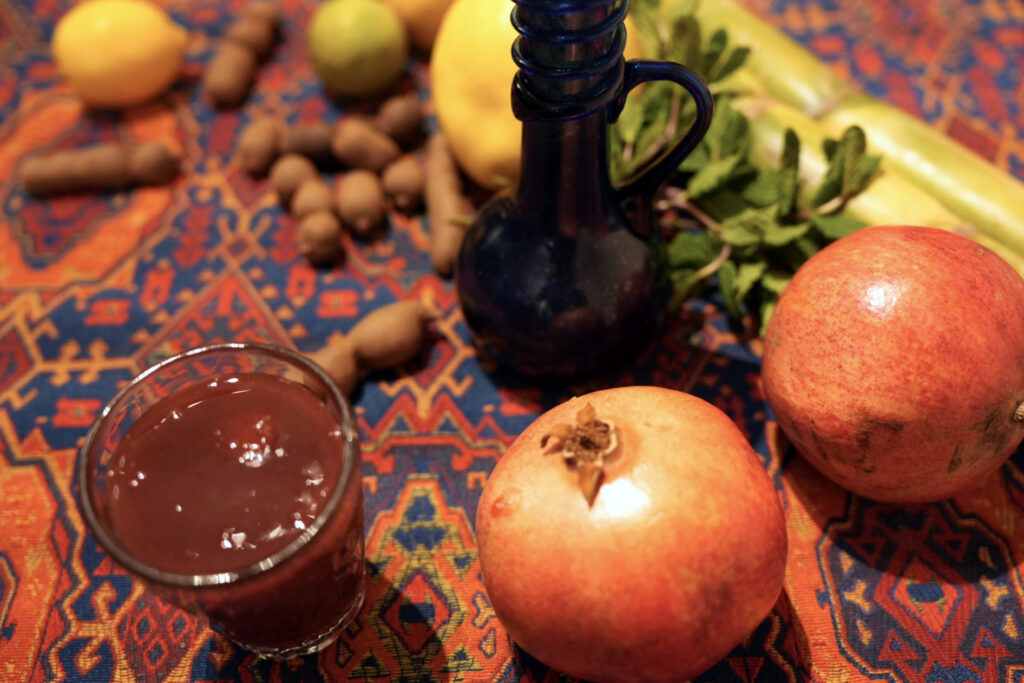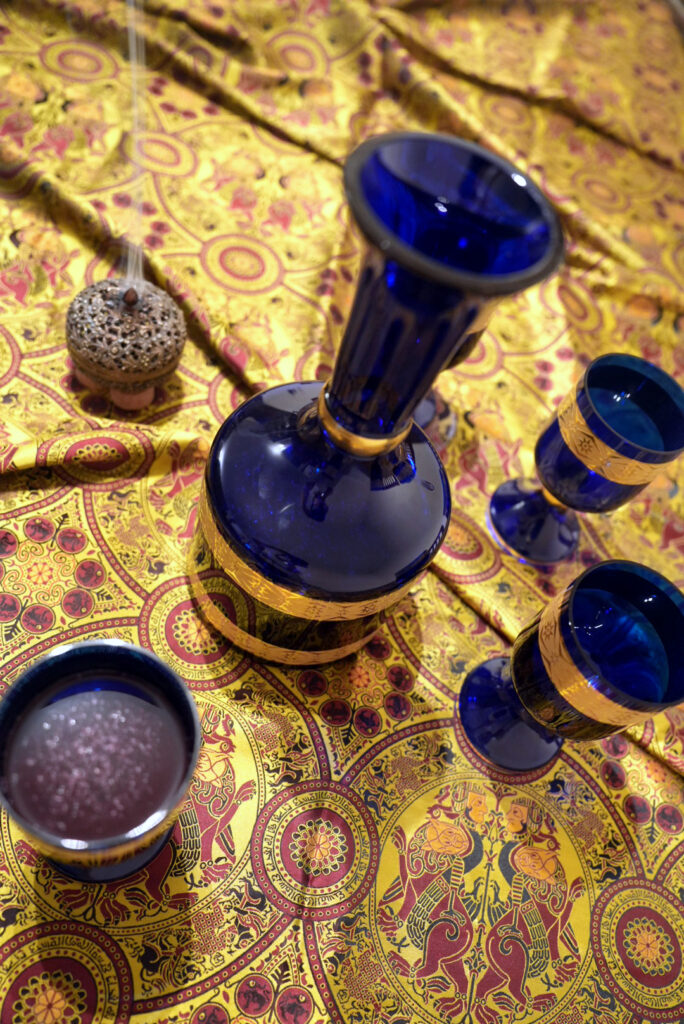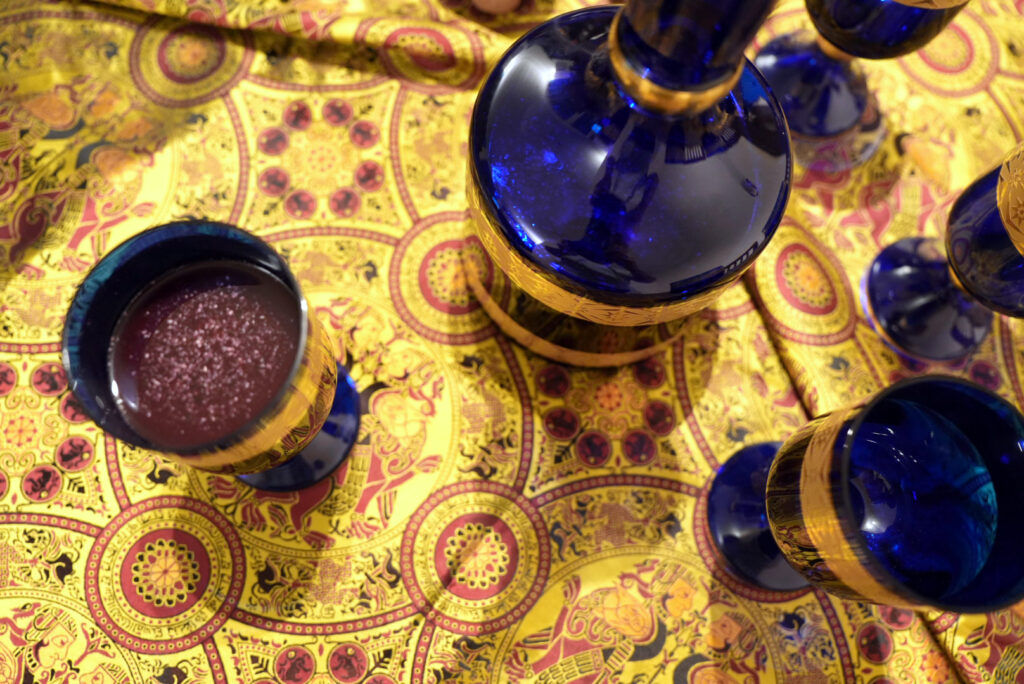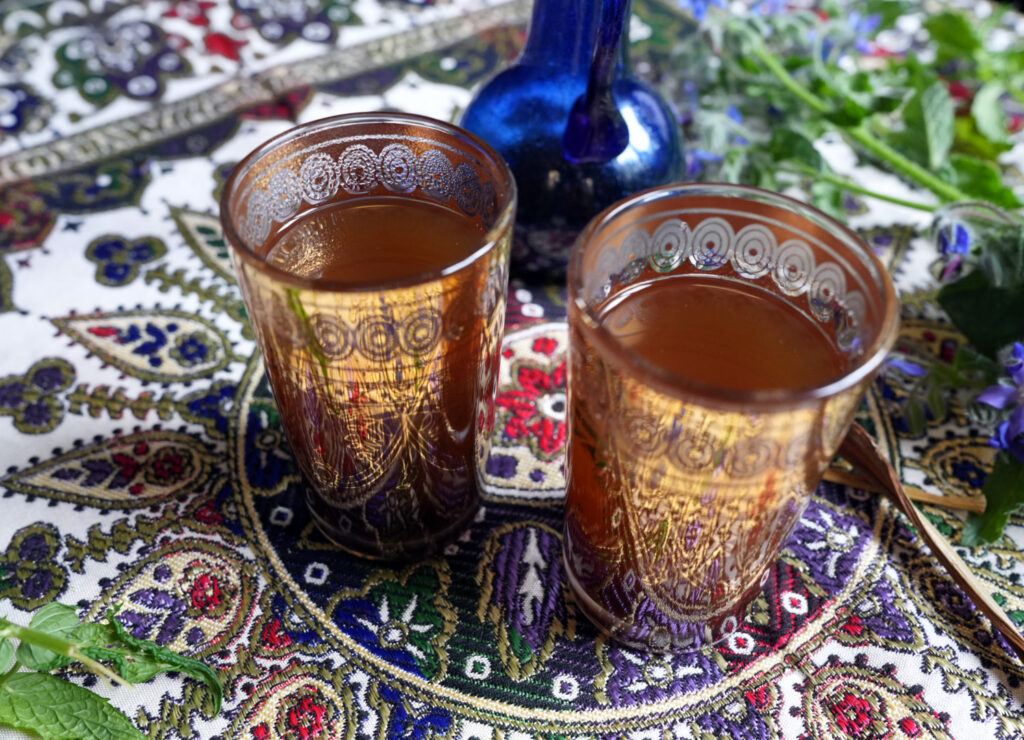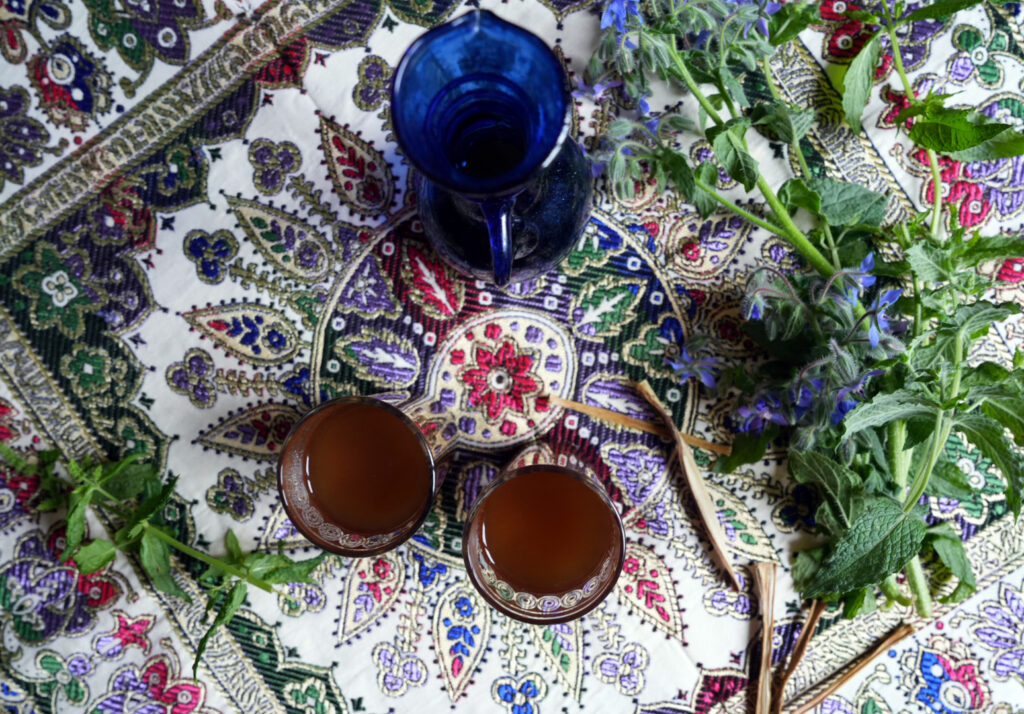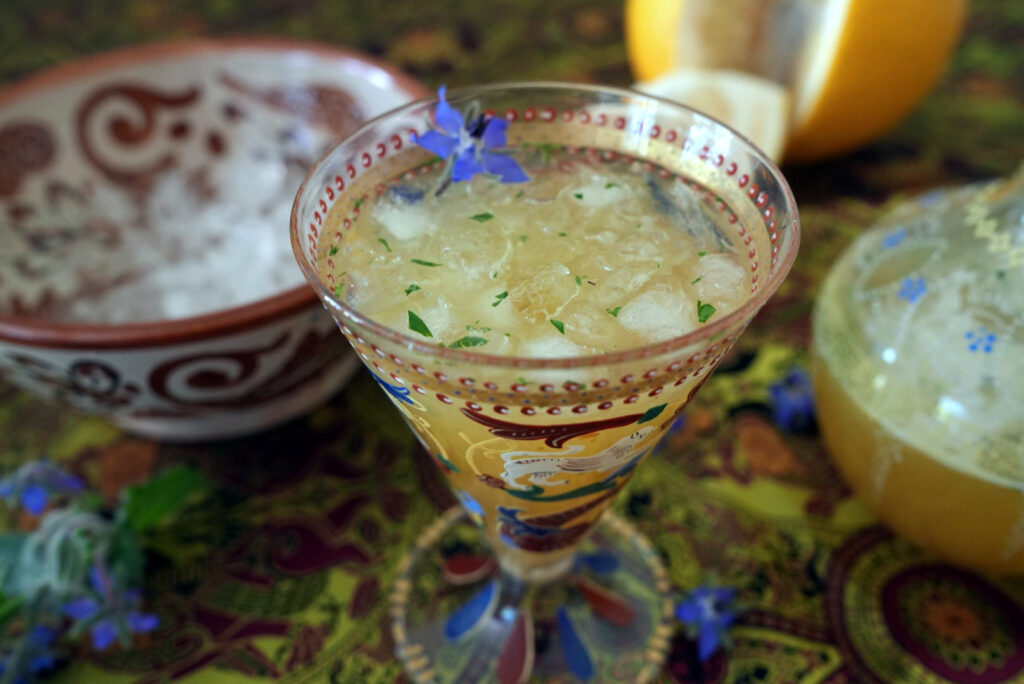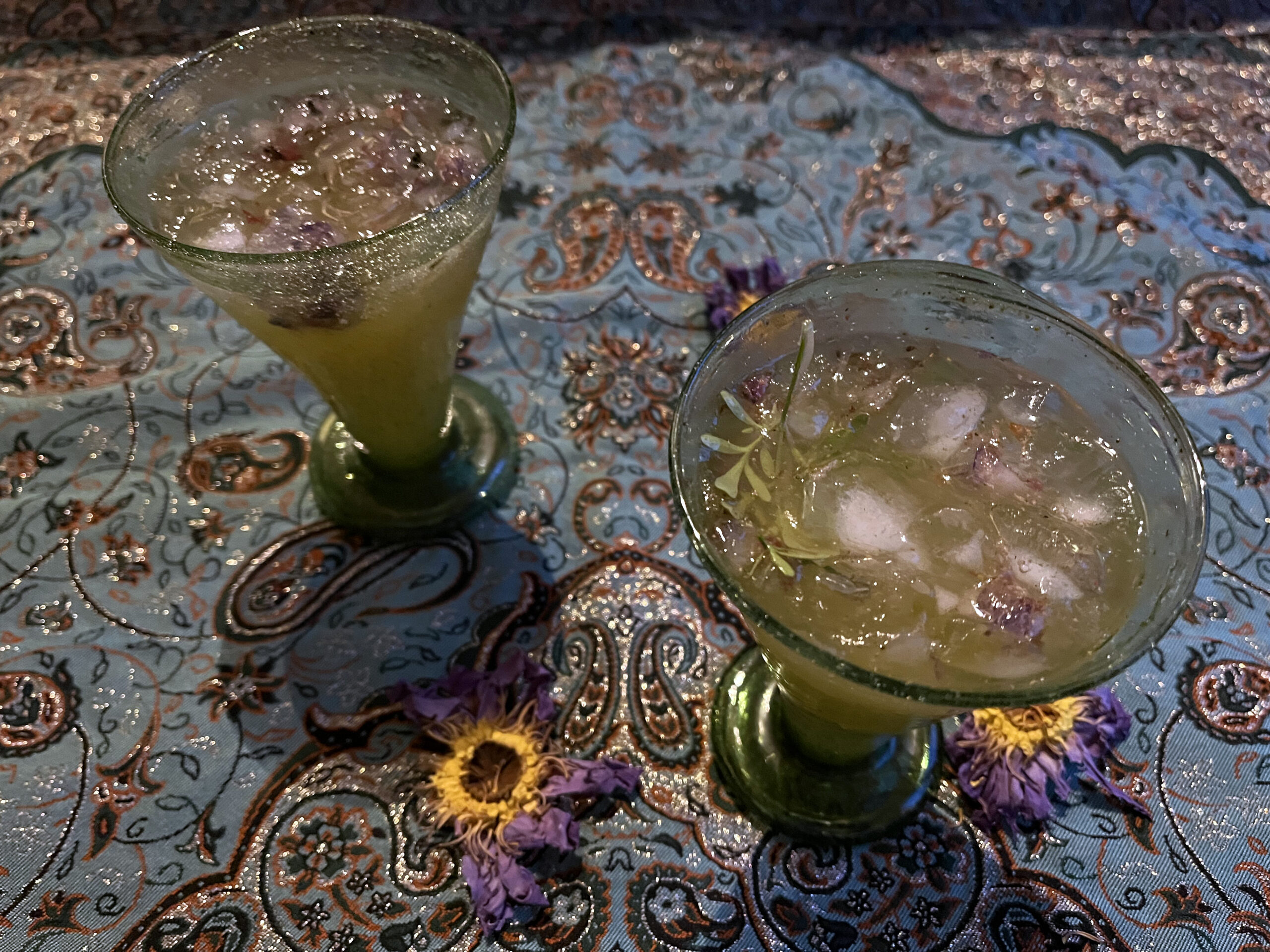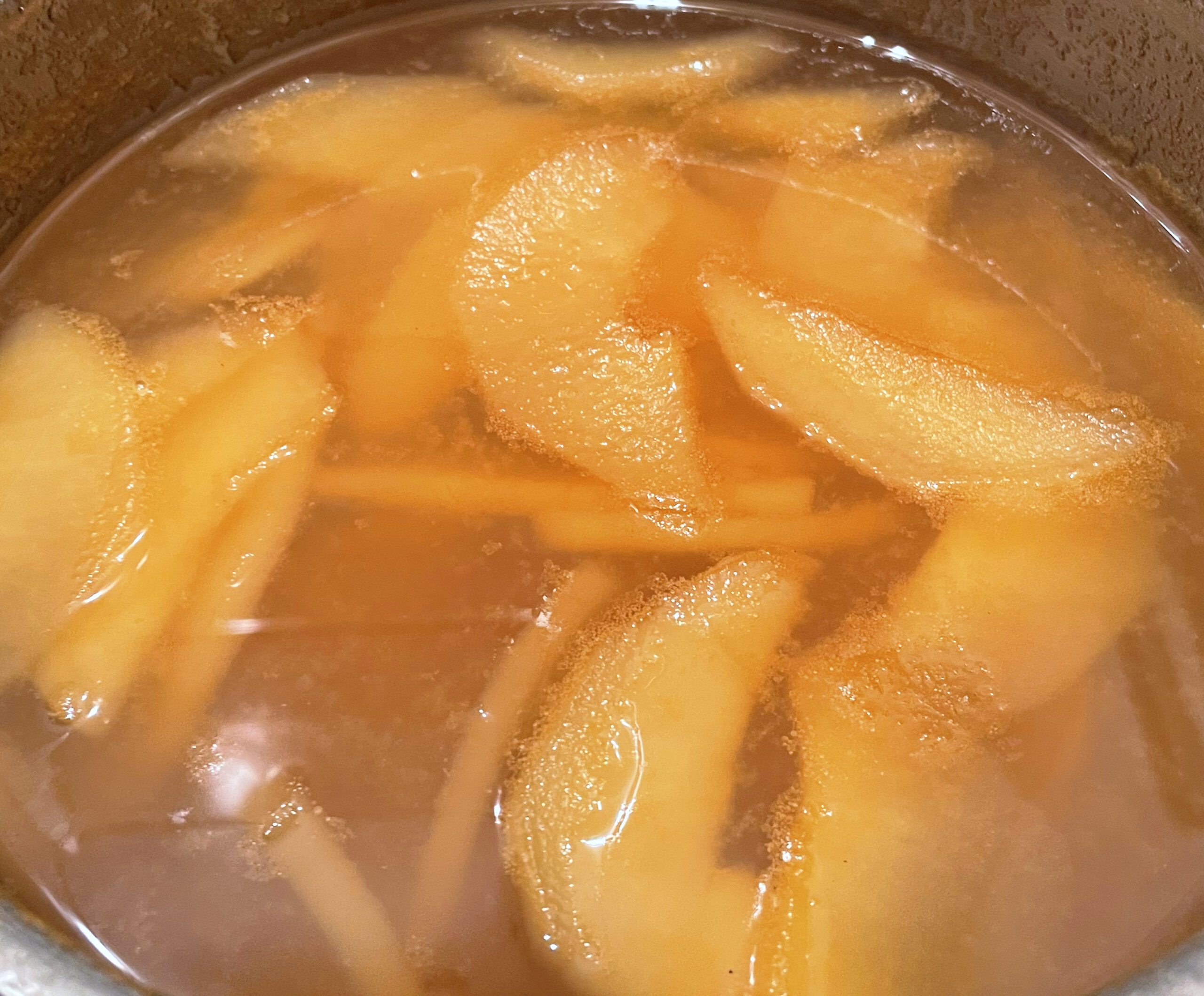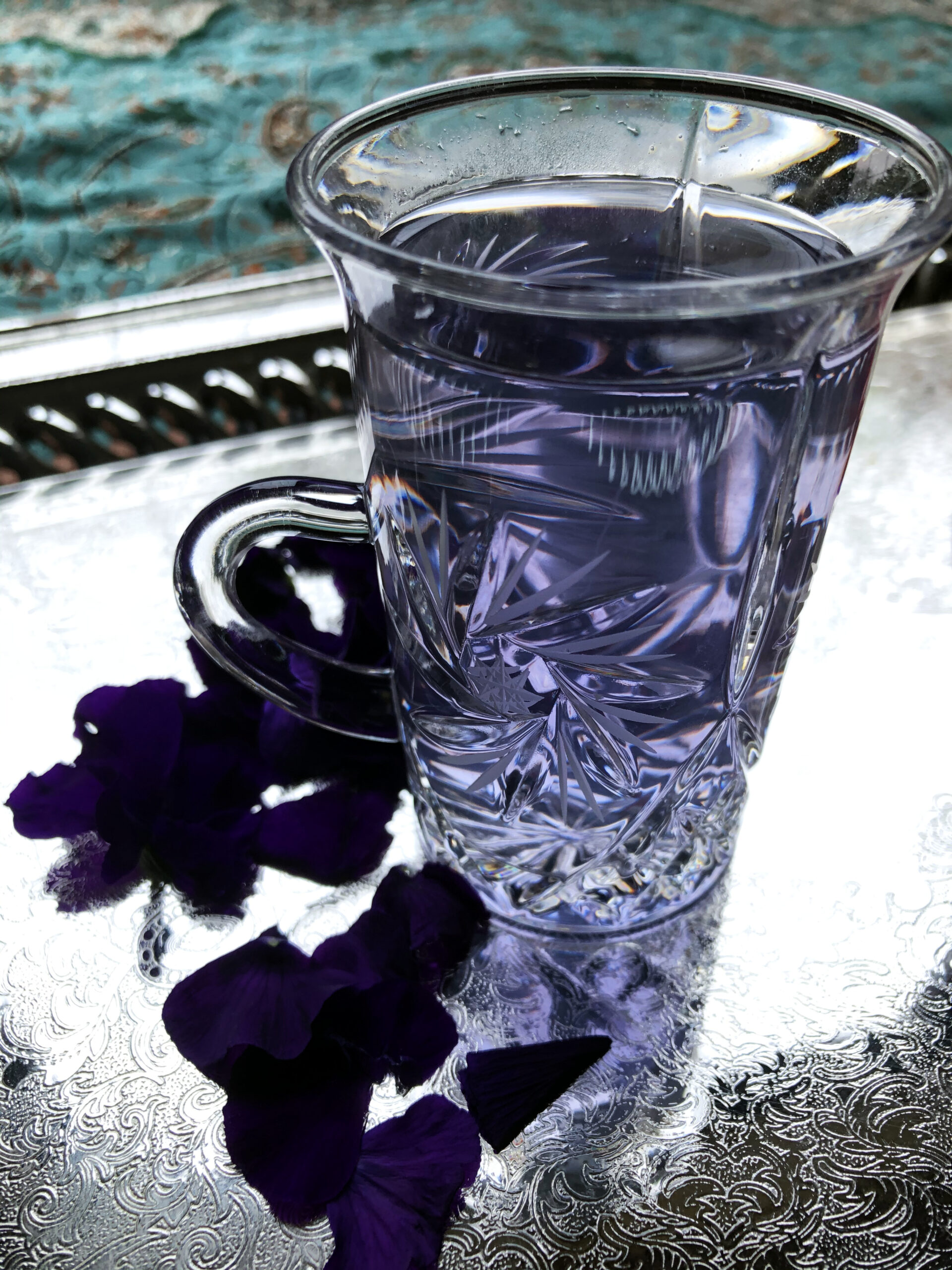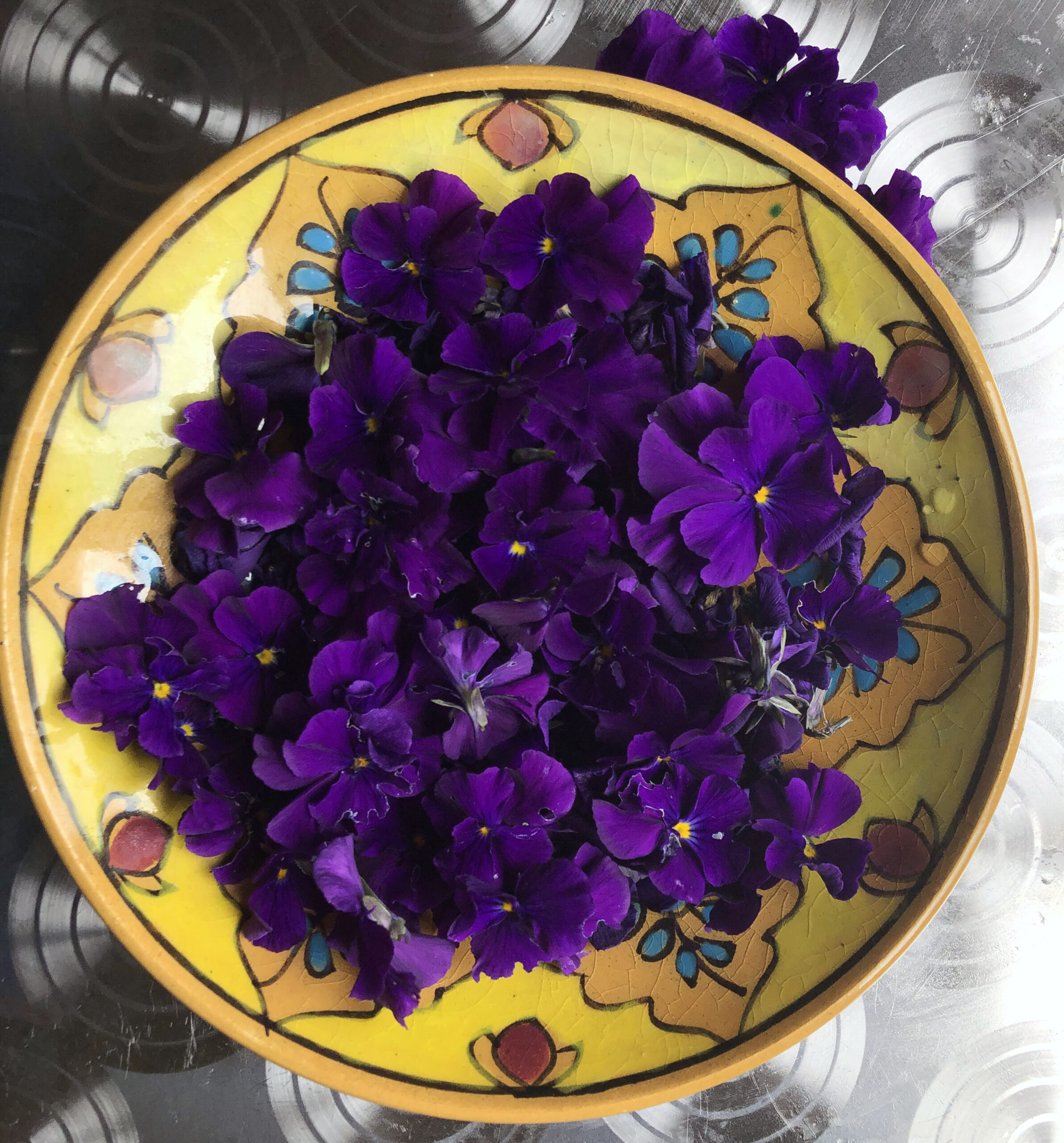This recipe for a malted barley drink (ماء الشعير, mā’ al-sha’īr) from 14th-century Egypt requires a bit of preparation and timing, but it is very much worth it. The first stage involves sprouting barley after soaking it (this will take several days). Once the barley is dry, it is ground into flour, to which wheat flour is added. After pouring on hot water, it is left overnight, after which cold water is poured before leaving it for a further two days. At the end of that period, it is time to add the leaves of citron, sour orange, rue and mint, together with lemons cut in half and a bit of salt for seasoning. Then leave it aside until the evening, when it is ready.
Before serving, the liquid is strained, and lemon juice, sugar, musk and rose water are added. Then, you’re good to go! Feel free to add some crushed ice for that mocktail effect! It’s truly amazing. This is one of the few ‘Ramadan’ drinks mentioned in the medieval Arabic culinary literature.
